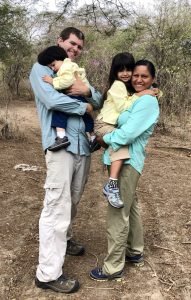Tropical forests cover about 10% of land on Earth. Yet, these habitats are home to one-half to two-thirds of all species on Earth and store 40% of terrestrial carbon. Over half of all tropical forests have been removed within the last 100 years; much of the remaining tropical forests are degraded. There is great potential to help mitigate climate change through restoring degraded tropical forests. However, prioritizing where to conduct restoration is complex.
University of Florida researchers completed the newest and highest–resolution map of global carbon potential yet created to identify restoration priorities. This map is a key component of WePlan, a newly launched web–based tool made in collaboration with the United Nations and other groups. WePlan will assist everyone from local stakeholders to national governments in prioritizing where to conduct tropical forest restoration.

“We created a predictive model from thousands of forest plots using cloud-based supercomputer clusters. Then we mapped potential carbon uptake in high-resolution at a global scale,” said Eben Broadbent, assistant professor of forest ecology and geomatics. Broadbent co-leads the Spatial Ecology and Conservation Lab at UF with Angélica Almeyda Zambrano, research faculty in the Tropical Conservation and Development Program at the Center of Latin American Studies.
Almeyda Zambrano and Broadbent are key research associates of the International Institute for Sustainability which leads the overall WePlan project. Their involvement in the project began during an initial global restoration prioritization effort published in “Science Advances” in 2019.
WePlan will help meet one of the United Nation’s “biodiversity targets” to enhance ecosystem resilience and the contribution of biodiversity to carbon stocks. This goal will be met by restoring at least 15% of degraded ecosystems and in turn mitigating and adapting climate change and combatting desertification. Follow this link for more detailed information on the WePlan Project.
Feature photo: Aerial view natural landscape with rainbow. Photo Credit: Fredy F. Ramírez Arévalo, used with permission.
 0
0
